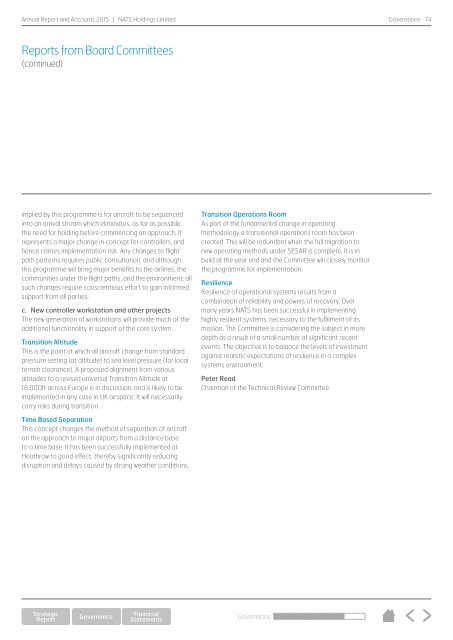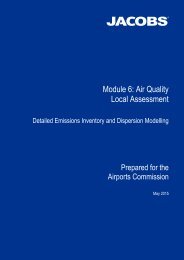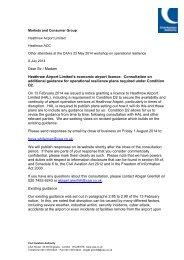NATS-Annual-Report-2015
NATS-Annual-Report-2015
NATS-Annual-Report-2015
You also want an ePaper? Increase the reach of your titles
YUMPU automatically turns print PDFs into web optimized ePapers that Google loves.
<strong>Annual</strong> <strong>Report</strong> and Accounts <strong>2015</strong> | <strong>NATS</strong> Holdings Limited<br />
Governance<br />
74<br />
<strong>Report</strong>s from Board Committees<br />
(continued)<br />
implied by this programme is for aircraft to be sequenced<br />
into an arrival stream which eliminates, as far as possible,<br />
the need for holding before commencing an approach. It<br />
represents a major change in concept for controllers, and<br />
hence carries implementation risk. Any changes to flight<br />
path patterns requires public consultation, and although<br />
this programme will bring major benefits to the airlines, the<br />
communities under the flight paths, and the environment; all<br />
such changes require conscientious effort to gain informed<br />
support from all parties.<br />
c. New controller workstation and other projects<br />
The new generation of workstations will provide much of the<br />
additional functionality in support of the core system.<br />
Transition Altitude<br />
This is the point at which all aircraft change from standard<br />
pressure setting (at altitude) to sea level pressure (for local<br />
terrain clearance). A proposed alignment from various<br />
altitudes to a revised universal Transition Altitude at<br />
18,000ft across Europe is in discussion, and is likely to be<br />
implemented in any case in UK airspace. It will necessarily<br />
carry risks during transition.<br />
Transition Operations Room<br />
As part of the fundamental change in operating<br />
methodology a transitional operations room has been<br />
created. This will be redundant when the full migration to<br />
new operating methods under SESAR is complete. It is in<br />
build at the year end and the Committee will closely monitor<br />
the programme for implementation.<br />
Resilience<br />
Resilience of operational systems results from a<br />
combination of reliability and powers of recovery. Over<br />
many years <strong>NATS</strong> has been successful in implementing<br />
highly resilient systems, necessary to the fulfilment of its<br />
mission. The Committee is considering the subject in more<br />
depth as a result of a small number of significant recent<br />
events. The objective is to balance the levels of investment<br />
against realistic expectations of resilience in a complex<br />
systems environment.<br />
Peter Read<br />
Chairman of the Technical Review Committee<br />
Time Based Separation<br />
This concept changes the method of separation of aircraft<br />
on the approach to major airports from a distance base<br />
to a time base. It has been successfully implemented at<br />
Heathrow to good effect, thereby significantly reducing<br />
disruption and delays caused by strong weather conditions.<br />
Governance






